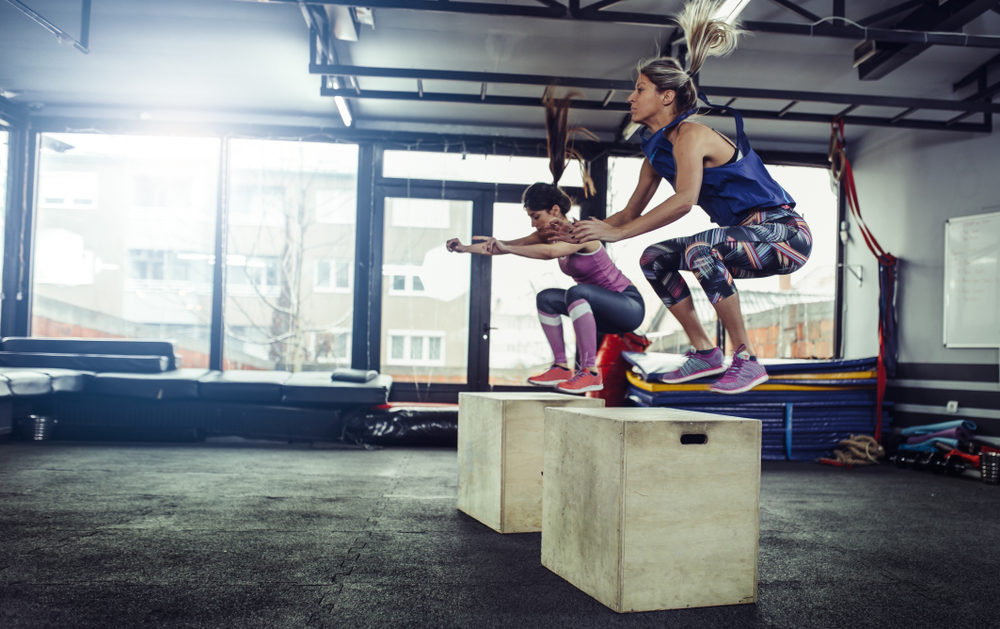CrossFit is a popular fitness training program that can sometimes lead to injuries from overexertion. Find out how to protect yourself and stay at the top of your game.
CrossFit has become increasingly popular in recent years, with people of all ages and skill levels jumping into this intensive training regimen. CrossFit trainers often ask participants to perform many reps, or a high number of reps within a limited amount of time, to build strength and endurance.
While the competitive aspect of CrossFit can be a motivating factor, pushing your limits can also lead to injury. Here’s what you need to know about the causes and symptoms of common CrossFit-related injuries, as well as how to keep these conditions from happening to you.
LOWER BACK PAIN
With all the bending, lifting, and jumping expected in CrossFit, your lower back has a lot of work to do. This can set the stage for injuries, as an unstable spine can lead to pinched nerves, herniated discs, or ruptures.
Good form and proper training are crucial for protecting the lumbar area. The key is to warm up the muscles and decompress your spine before beginning your workout. Focus your stretching on the back, upper legs, and buttocks. Test your full range of motion by twisting and touching your toes, and pay attention to any discomfort that arises.
To prevent damage, build up your lower back muscles with hip raises or back extensions. Have a trainer check your neutral spine during lifts. To reduce your risk of bulging discs, ask for a modified exercise or do fewer reps or heavy lifts. Take it easy and don’t try to “max out” too quickly.
If your back goes out, or if you experience chronic pain, this could be a warning sign to stop training and take a rest. Kinesiology tape might help healing and ease pain, but don’t expect it to prevent injuries. If you do experience sudden pain, immediately stop exercising and contact a doctor.
SLAP TEAR (SHOULDER LABRUM TEAR)
It’s hard to avoid using your shoulder in CrossFit, but any exercise that requires strenuous lifting, carrying, or reaching can damage the joint. Frequently rotating the arms also puts the labrum — a rim of cartilage lining the shoulder socket — at greater risk of injury. This can result in a shoulder labrum tear or SLAP tear, which is often accompanied by persistent pain and a limited range of motion.
It’s important to begin your CrossFit workout with a proper warm up. Start slowly, especially if you’re new to the exercise. Protect your shoulders by learning how to lift weights the right way, keeping your back straight and using your legs to power the lift. If you’re not sure how to use a particular piece of equipment, ask your trainer.
To prevent injuries from overuse, avoid pushing yourself beyond your limits, particularly when it comes to weightlifting. Countless repetitions wear on the joints — so if your shoulder starts to get sore, listen to your body and take time to rest.
ACHILLES TENDONITIS
The Achilles tendon can undergo a beating during demanding physical activities like high box jumps. If you feel pain during your CrossFit training, take a step back. The Achilles tendon, which attaches from the heel to the calf muscle in the back of the leg, can be damaged by overuse, leading to pain, swelling, stiffness, and difficulty bending your foot.
To prevent injury, start with proper stretching through the calves, feet, and knees. You can also strengthen your legs with resistance bands or calf raises. If you need more support, consider using a heel insert for your gym shoes. When you do high box jumps, make sure to land in the same position you started in, keep the knees neutral, and don’t jump backwards off the box, as this stresses the Achilles tendon.
Above all, avoid too many repetitions, as overuse can lead to inflammation and tears. Don’t train through the pain — a torn tendon may require surgery. Instead, take time off from exercise and allow yourself to heal.
ROTATOR CUFF TENDONITIS
CrossFitters are often tasked with lifting heavy weights above the shoulder or head. But what you might not know is that this puts you at risk for rotator cuff tendonitis, which affects the muscles and tendons that attach the upper arm to the shoulder.
To avoid injury in this area, be careful with your repetitions, and engage in strengthening exercises before you attempt more complex movements. Overhead lifts, for example, may stress the rotator cuff. To prepare for this exercise, work on increasing your shoulder mobility with pectoral stretches, and balance shoulder-press strength-building with pulling exercises.
With CrossFit, no matter the exercise, don’t rush through reps, sacrifice proper form, or work your body past its limits. If you notice pain, be sure to talk to an orthopedic specialist, who can help diagnose and treat your condition before it gets worse.




